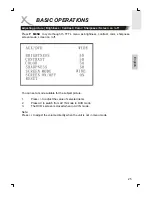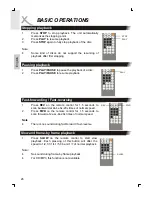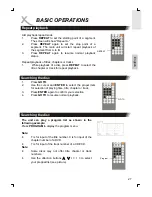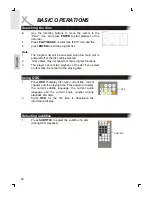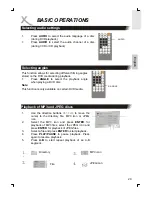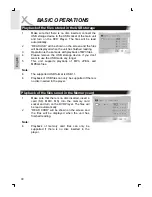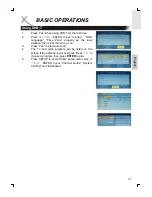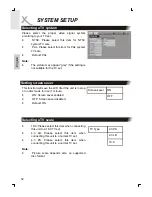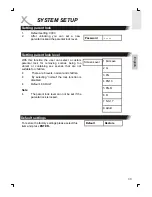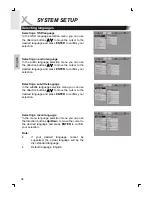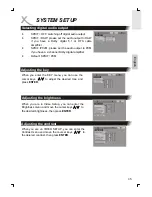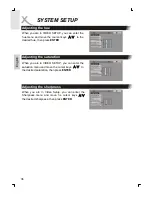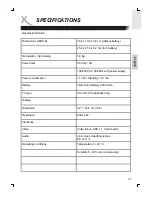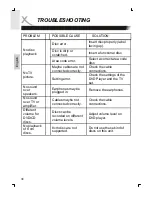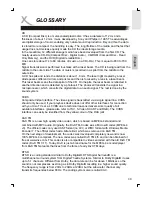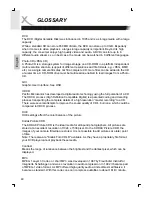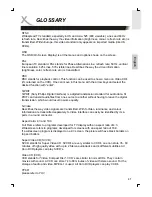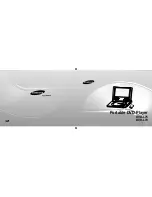
39
Engl
ish
GLOSSARY
CD
A CD (Compact Disc) is a metal-coated plastic disc. It has a diameter of 12 cm and a
thickness of about 1,2 mm. It was developed by Sony and Philips in 1985. The advantages
are digital storage of music enabling very natural sound reproduction. Beyond this, the data
is stored more compact, the handling is easy. The long lifetime of the media and the fact that
usage does not decrease quality made the CD the ideal storage media.
In the meantime, 12 different storage media have been developed from the first CD. The
mostly used are CD-DA (Compact Disc - Digital Audio) , CD-ROM (Compact Disc - Read
Only Memory), and the DVD (Digital Versatile Disc).
One can store about 74 to 80 minutes of music on a CD (-DA). This is equal to 650 to 700
MB
Signal transmission is performed touchless with a laser beam. The CD is being read from the
middle to the outer side. The data or music is recorded in a spiral from the middle to the
outer side.
A CD has pits and lands, the distance is about 1,6 mm. The laser light created by a laser
diode passes different mirrors and prisms and then is focused by a lens to a laser beam.
This laser beam scans the data spiral of the CD. On the pits, the laser beam is reflected in
another direction and is detected by a photocell. The photocell transmits the signal to a
microprocessor, which converts the digital data to an audio signal. The rest is done by the
sound system.
CVBS
Composite Video Interface. The video signal is transmitted via a single signal line. CVBS
should only be used, if your playback device does not offer other interfaces for connection
with you Xoro TV set, as CVBS due to technical reasons delivers worst quality of all
available interfaces (please also refer to YUV, S-Video, SCART and RGB). The CVBS
interface can easily be identified from the yellow colour of the RCA jack.
DivX TM
DivX TM is a new high quality video codec, which is based on MPEG-4 standard and
combined with MP3 audio. Originally, the DivX TM-Codec was a Microsoft codec (MPEG-4
v3). The official codec only used ASF format (no AVI) or WMV format with Windows Media
Encoder 7. The official codec had a bitrate limit, which was removed on DivX TM.
On the next stage of development, the codec was developed completely new and is now
100% MPEG-4 compliant. The new codec was called DivX TM 4/5 and can be obtained for
free at www.divx.com. This codec is also compatible to videos encoded with the old DivX TM
codec (DivX TM 3.11). Today, DivX is just a brand name for the MPEG-4 encoder/player
from DivX TM Networks that lives from the fame of early DivX TM days.
.
DTS®
DTS® is a coding standard similar to Dolby Digital®. DTS Digital Surround® is a
multichannel surround system from Digital Theatre Systems. Similar to Dolby Digital® it uses
up to 5.1 channels. Different from Dolby, the data rate can be far above 1 Mbit/sec so the
sound is not compresses as strong as in Dolby Digital® resulting in a higher sound quality.
The frequency range is from 20Hz to 20kHz at 20Bit, but the subwoofer channel only
transmits frequencies below 80Hz. The coding system also is called CAC.

